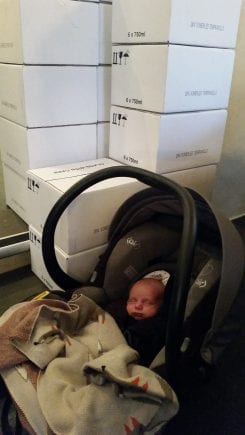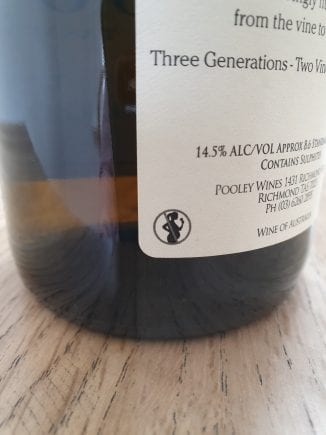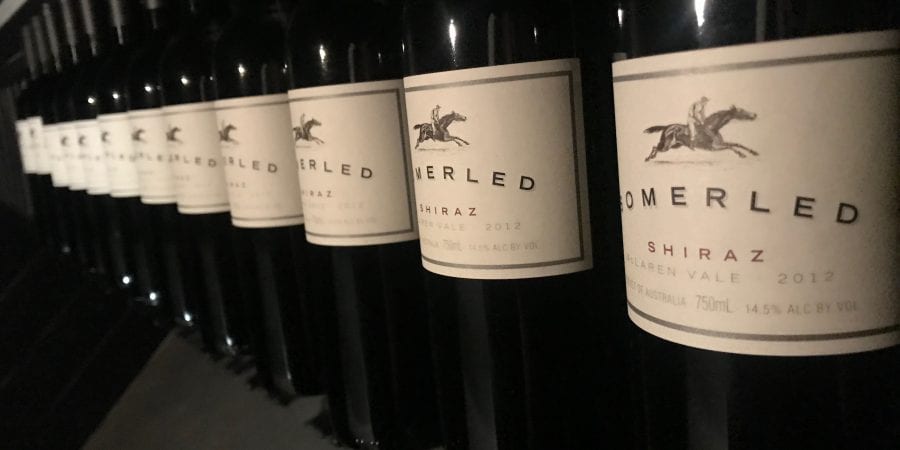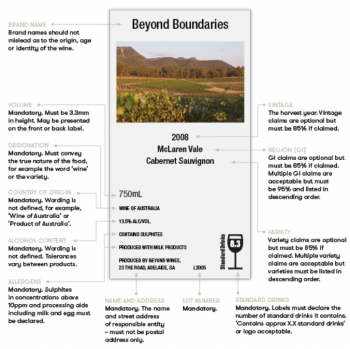This week I have been working on some labels for our brand new wines coming through the pipe/bottling line!
Keep an eye out in the coming months for our…
2016 Shiraz
2018 Tempranillo
2019 Pinot Noir
and a bit further down the track our 2019 Tempranillo.
Lots to look forward to!
As I’ve mentioned before, there are a handful of things that absolutely need to be included on any wine label. There are also a few nice to haves.
Have a read of this post I wrote last year for all the details. But here is a quick summary from Wine Australia (click on the picture for a bigger version and more info)…
The non-negotiable stuff…
- Volume
- Designation (what’s in the bottle… ie. wine)
- Country of Origin
- Alcohol Content
- Allergens
- Name and Address
- Lot number (or be prepared for all wine bearing the same label to be recalled if necessary)
- Number of standard drinks
The optional stuff…
- Vintage
- Variety
- Geographical Indication (like Adelaide Hills)
Which all need to adhere to their own set of strict regulations if included
- Pregnancy warning
So, this is where (it looks likely that) things are going to change. And soon.
 Now, I’m not going to enter into a medical or philosophical discussion about having a glass or two of wine while you’re pregnant.
Now, I’m not going to enter into a medical or philosophical discussion about having a glass or two of wine while you’re pregnant.
Short term studies suggest that drinking alcohol in moderation while pregnant has no effect on the foetus. I mean, we all turned out ok… didn’t we??!!
These days, with an increase in the prevalence of Foetal Alcohol Spectrum Disorders (FASD) (around 2% of babies born) and little or no long-term data, the current recommendation is to consume no alcohol while pregnant. Luckily for me, I lost my wine palate while I was pregnant, so the choice was well and truly out of my hands!
 Just last week though, the news came that Food Standards Australia and New Zealand (FSANZ) have approved a draft amendment to the Australia New Zealand Food Standards Code to require a pregnancy warning label on packaged alcoholic beverages sold in Australia and New Zealand.
Just last week though, the news came that Food Standards Australia and New Zealand (FSANZ) have approved a draft amendment to the Australia New Zealand Food Standards Code to require a pregnancy warning label on packaged alcoholic beverages sold in Australia and New Zealand.
At the moment, it is up to individual producers whether or not they include this symbol on their labels (see left)…
But if within the next 50 days or so no one can come up with a compelling reason why it shouldn’t be included then all wineries will be made to include something like this on their labels…

It will be mandatory on bottles of more than 200mL in volume and more than 1.15% alcohol content.
I sort of understand why FSANZ is making this a thing. They have expressed concerns about the current labelling system, particularly regarding:
- a lack of participation – less than half (48%) of packaged alcoholic beverages in Australia carry a pregnancy warning label;
- inconsistencies between current labels and government advice;
- consumer misunderstanding – particularly as a result of the placement of labels, for example, when located next to messages such as “enjoy in moderation”; and
- the high rates of consumption during pregnancy – Australia has one of the highest rates of alcohol consumption during pregnancy in the world.
On the flip side though… the wine industry is pretty peeved.
Australian wine producers are getting a bit stressed about how much this is all going to cost. Particularly at a time when they are already under a lot of other stresses.
The other thing is, the 48% of producers who already include the simple pictogram their labels will have to relabel all their wines with the bigger health warning. A very costly exercise.
There are interesting arguments for each side of the discussion. Let’s hope that both sides are considered when the final decision is made.
Loving our blog? Sign up for weekly updates straight to your inbox here.
What about the rest of the world?
It looks like it is an important topic around the world too.
Labelling of alcoholic beverages to indicate negative outcomes was identified as a priority in the World Health Organisation’s 2010 Global strategy to reduce the harmful effects of alcohol. For this reason, it has become a policy area of renewed interest around the world.
France was the first member state of the European Union to require producers to inform consumers about the dangers associated with the consumption of alcoholic beverages back in 2007. Since then, all producers need to include the following message: “consumption of alcoholic drinks during pregnancy, even in small amounts, may have serious consequences on the child’s health”; or to use the pictogram of the pregnant woman drinking.
Twenty-seven other countries have mandated pregnancy warning labels, including the United States, South Africa, Mexico and Turkey.
In other countries like Italy, a voluntary and unregulated approach is still working.
We’ll know the outcome for Australian and New Zealand Wines in just under two months, so stay tuned.
Also, watch out for next week’s blog when I’ll fill you in on news from the vineyard. Our first grapes from vintage 2020 will be picked next week. I’ll also have some news regarding smoke taint test results from the Adelaide Hills.
See you then!


Interesting stuff. In the end I think the pro’s outweigh the cons, but given the absurd punitive taxes on wine in this country, some means of crediting producers for changeover costs incurred should be included in the legislation. And of course I understand that that’s wishful thinking.
That would be ideal Stan, but yes… I don’t think we should hold our breath for that!